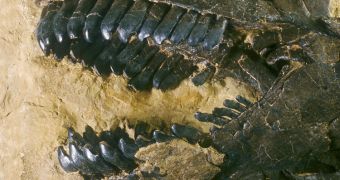In a study supported by the US National Science Foundation (NSF), researchers managed to obtain the first measurements indicating the temperatures of dinosaurs' bodies. These data can help us determine whether the creatures were quick and agile on their feet, or rather slow and lumbering.
The new investigation was spearheaded by expert Robert Eagle, who is based at the California Institute of Technology (Caltech), in Pasadena. The new method of analysis he and his team set up will help experts determine which of the giant reptiles relied on their environment for heat and which did not.
When dinosaurs were first discovered, experts at the time proposed that the animals were ferocious creatures, that were forced to rely on their environment to provide them with the heat their bodies needed to function properly.
This is the same thing that modern-day reptiles do. Since they are cold-blooded, they do not produce heat internally. As such, they must bathe in the sunlight in order to warm themselves up, and tend to take on the temperature of their environment.
Conversely, mammals such as our selves are able to produce internal heat through our metabolisms. We burn nutrients and produce energy and heat, that help keep our blood warm. On the downside of things, we require stable temperatures to survive, and have a hard time adapting swiftly to extremes.
Over the past few decades, emerging research has demonstrated that dinosaurs such as velociraptors or Tyrannosaurus rex required warmer, regulated body temperatures in order to survive. In other words, they could not afford to depend exclusively on their environment for heat.
“Eagle and colleagues have applied the newest and most innovative techniques to answering the question of whether dinosaurs were warm- or cold-blooded,” comments NSF Division of Earth Sciences program director Lisa Boush.
“The team has made important strides in discovering that the body temperature of dinosaurs was close to that of mammals, and that the dinosaurs' physiology allowed them to regulate that temperature. The result has implications for our understanding of dinosaurs' ecology – and demise,” she adds.
The new method relies on studying the teeth of long-tailed, long-necked dinosaurs called sauropods, that were the heaviest animals ever to live on Earth. The Caltech team determined that these creatures were just as warm as mammals are today.
“This is like being able to stick a thermometer in an animal that has been extinct for 150 million years,” explains Eagle, who holds an appointment as a geochemist at Caltech. He is also the lead author of the new study, which appears in the June 23 online of the top journal Science Express.

 14 DAY TRIAL //
14 DAY TRIAL //